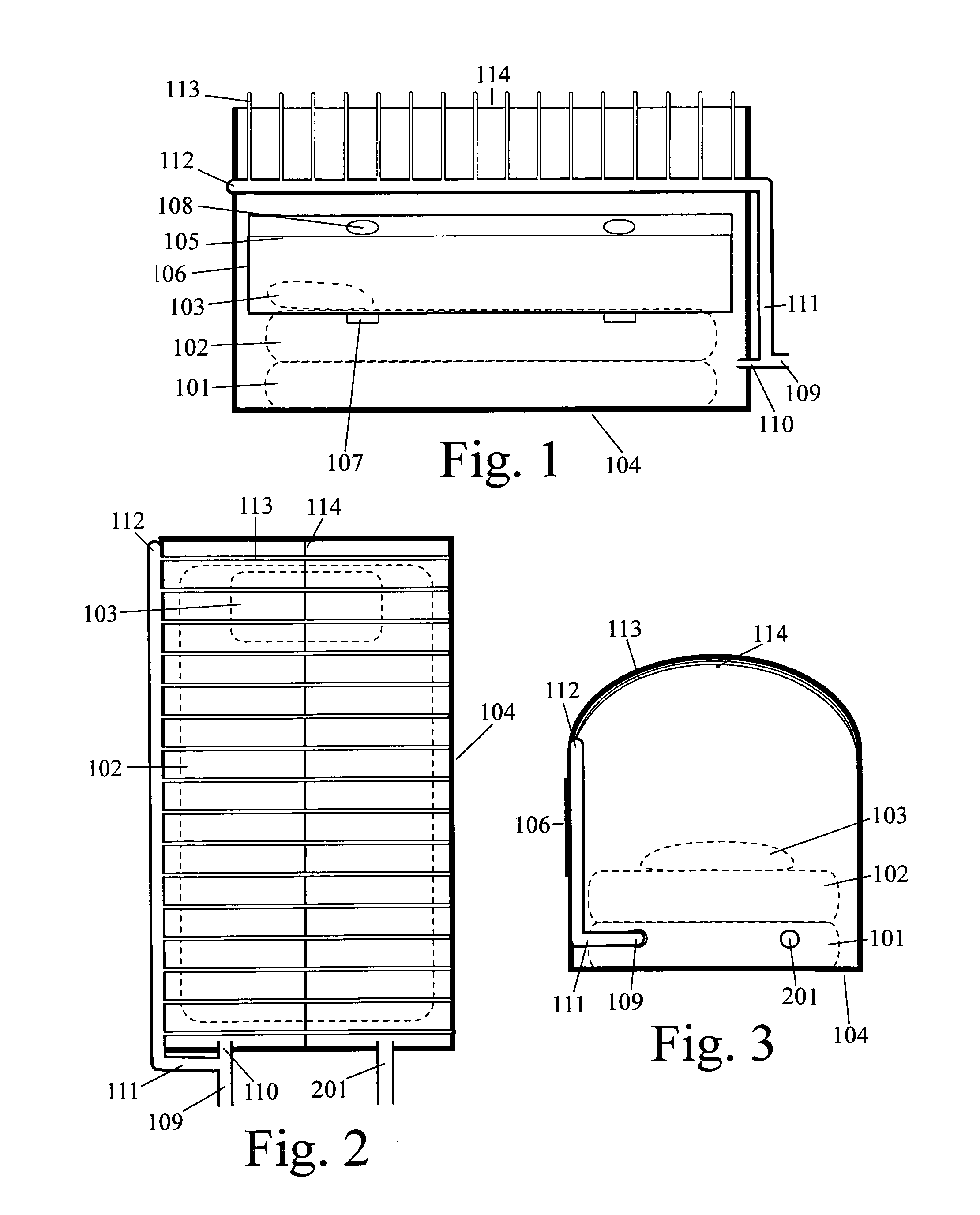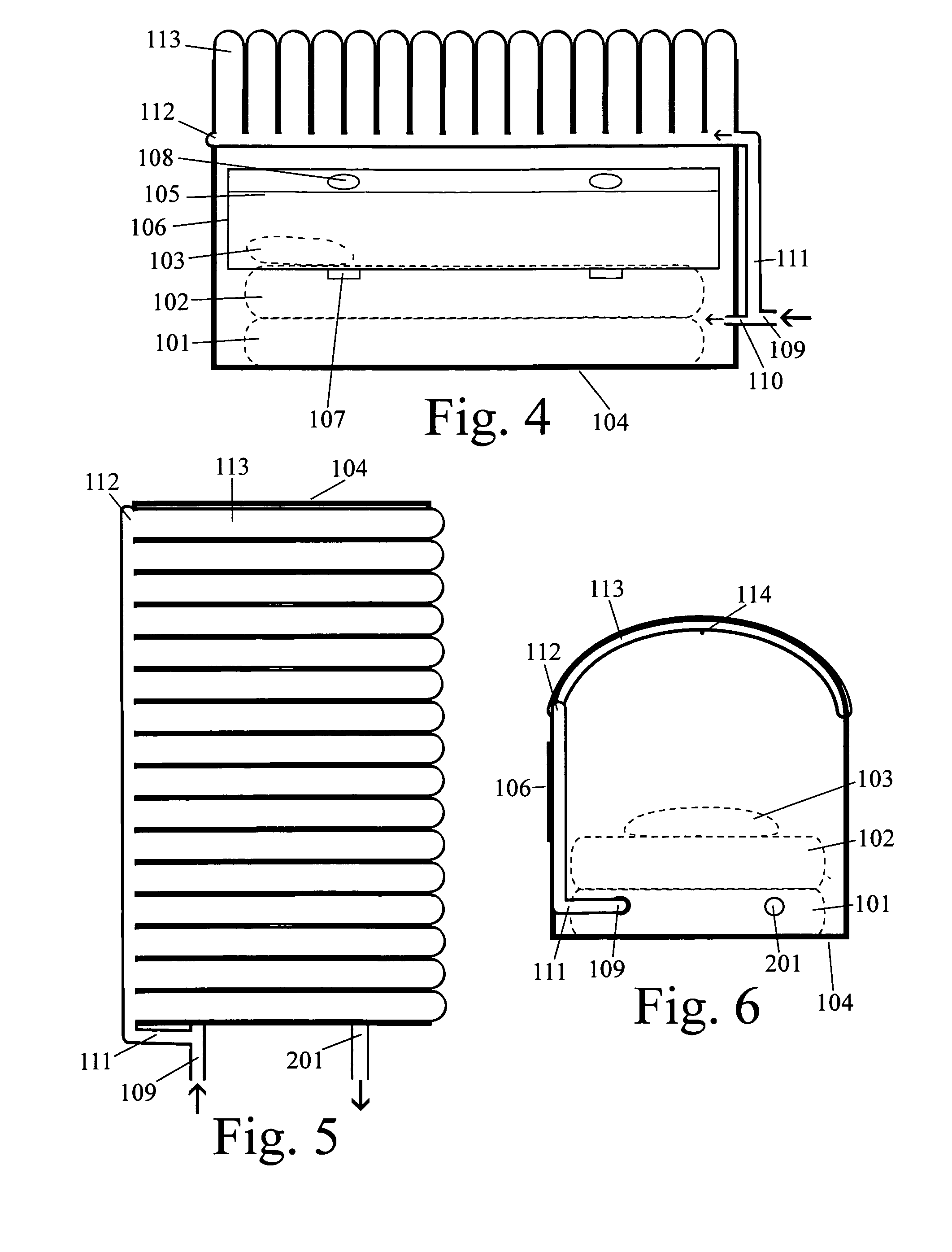Sleeping enclosure with assured ventilation
a sound insulation and mattress technology, applied in the field of sound insulation enclosures, can solve the problems of increasing noise, high noise level, and especially devastating, and achieve the effects of reducing external noise intrusion, superior sound insulation properties, and superior safety properties
- Summary
- Abstract
- Description
- Claims
- Application Information
AI Technical Summary
Benefits of technology
Problems solved by technology
Method used
Image
Examples
Embodiment Construction
[0034]These figures show different examples of how this invention may be embodied. However, these examples are not exhaustive. These figures do not limit the full generalizability of the claims.
[0035]FIGS. 1 through 3 show three different views of one embodiment of this invention. This embodiment contains a bed, has a rectangular horizontal cross-section, and has a ceiling formed by parallel, arched, longitudinal inflatable members. The inflatable members of the ceiling have gaps between them when they are not inflated and do not have gaps between them they are inflated. FIGS. 1 through 3 show them when they are not inflated.
[0036]FIG. 1 shows a side view of this embodiment. The walls of the enclosure are transparent and there is no internal light source. In another example, the walls of the enclosure may be opaque and there may be an internal light source. This internal light source may be adjusted to create a light environment within the enclosure that is independent from the ligh...
PUM
 Login to View More
Login to View More Abstract
Description
Claims
Application Information
 Login to View More
Login to View More - R&D
- Intellectual Property
- Life Sciences
- Materials
- Tech Scout
- Unparalleled Data Quality
- Higher Quality Content
- 60% Fewer Hallucinations
Browse by: Latest US Patents, China's latest patents, Technical Efficacy Thesaurus, Application Domain, Technology Topic, Popular Technical Reports.
© 2025 PatSnap. All rights reserved.Legal|Privacy policy|Modern Slavery Act Transparency Statement|Sitemap|About US| Contact US: help@patsnap.com



